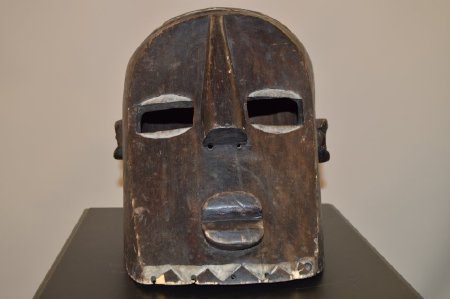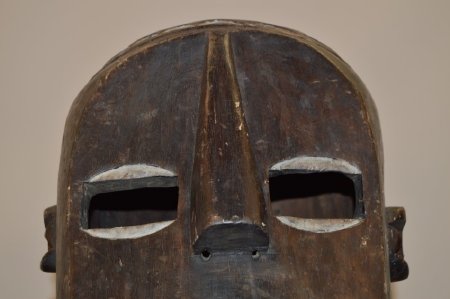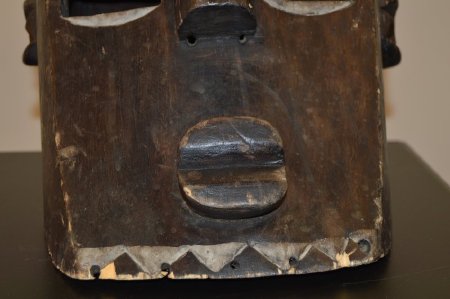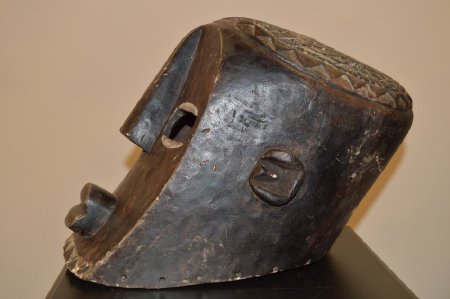Title:
Lwalwa Helmet Mask
Object Name:
Mask, Helmet, Lwalwa
Other Name:
Mask, Helmet
Place of Origin:
Lwalwa, Democratic Republic of Congo, Africa
Provenance:
Aboriginal Indigenous Art.
Lwalwa carvers are famous for their masks. The masks typically display a balanced composition, an enlarged angular nose, a protruding mouth and slanted eyes set under a deeply formed forehead. These sharply delineated features give Lwalwa art almost geometric appearance. The masks may be divided into four types: the nkaki, or manís mask, with a nose sculpted into a wide triangular panel that sometimes extends up to the forehead; the shifoola, a mask with a short, hooked nose; the mvondo, the nose of which is reminiscent of the nkakiís, but smaller; and finally the mushika or kashika, which represents a woman and which has a frontal crest. The shapes of the nose are modeled after different birds. The lips are narrow but protruding and thick; the eyes have openings in horizontal slits. On the temples they have a protuberance that represents tattooing. The masks had an important function in the bangongo dance of the hunting ritual.
Lwalwa carvers are famous for their masks. The masks typically display a balanced composition, an enlarged angular nose, a protruding mouth and slanted eyes set under a deeply formed forehead. These sharply delineated features give Lwalwa art almost geometric appearance. The masks may be divided into four types: the nkaki, or manís mask, with a nose sculpted into a wide triangular panel that sometimes extends up to the forehead; the shifoola, a mask with a short, hooked nose; the mvondo, the nose of which is reminiscent of the nkakiís, but smaller; and finally the mushika or kashika, which represents a woman and which has a frontal crest. The shapes of the nose are modeled after different birds. The lips are narrow but protruding and thick; the eyes have openings in horizontal slits. On the temples they have a protuberance that represents tattooing. The masks had an important function in the bangongo dance of the hunting ritual.
Description:
Large wooden, black, helmet mask. Long wedge—shaped nose, extending to top of forehead, with two small circular, pierced nostril holes, at bottom of nose. Large square eyes, with a protruding circular mouth and circular ears. Triangular geometric designs along bottom front ring of mask and top outer ring, with inside top covered in small square—shaped patterns. Entire surface area covered in black patina.
Collection:
Guy Mace Collection, (Turblex Company)
Material:
Wood W/Patina or Pigments
Used:
Ritually Used
Technique:
Carving / Painting
Owned:
Art Department, MSSU
Accession#:
2015.2.82






